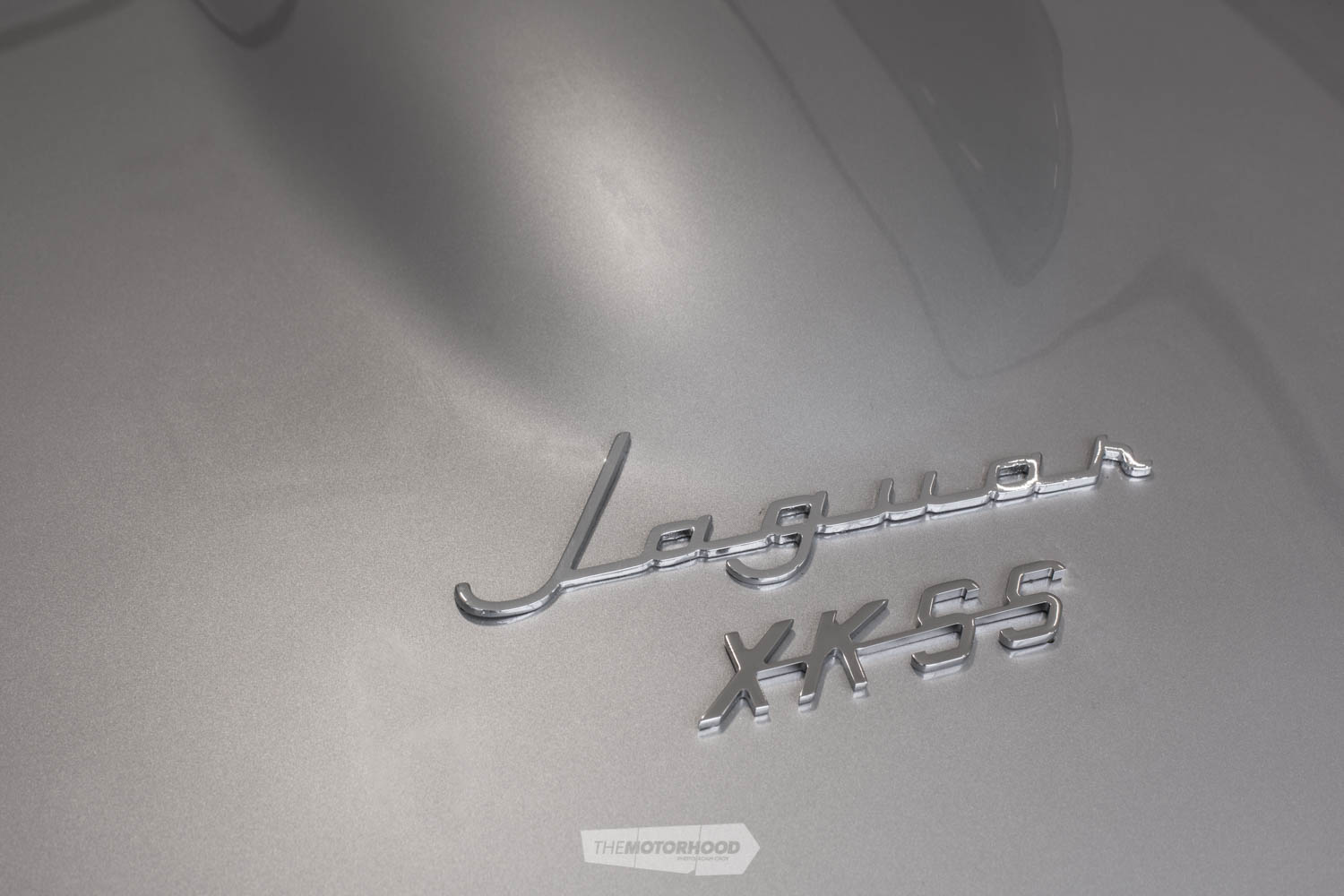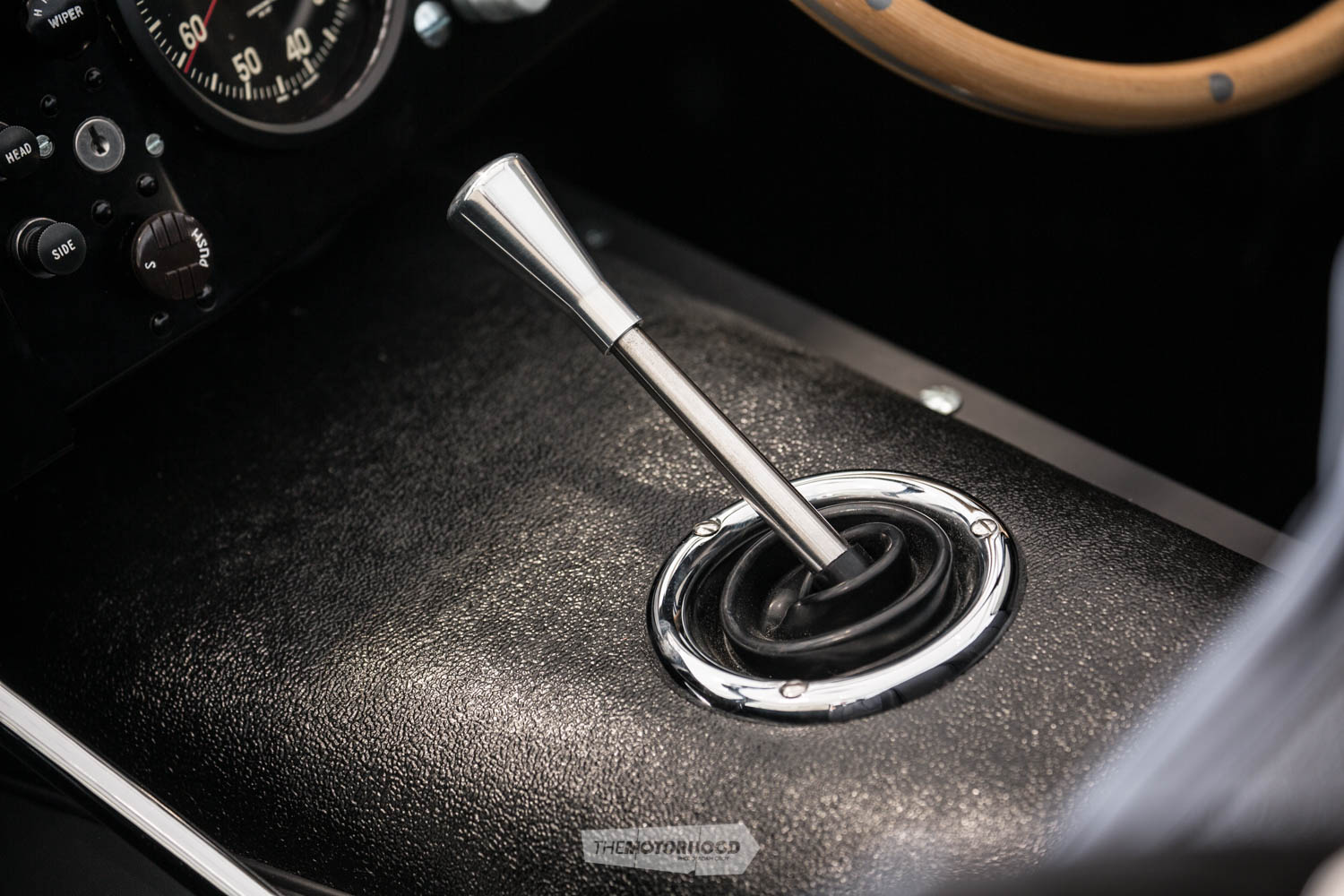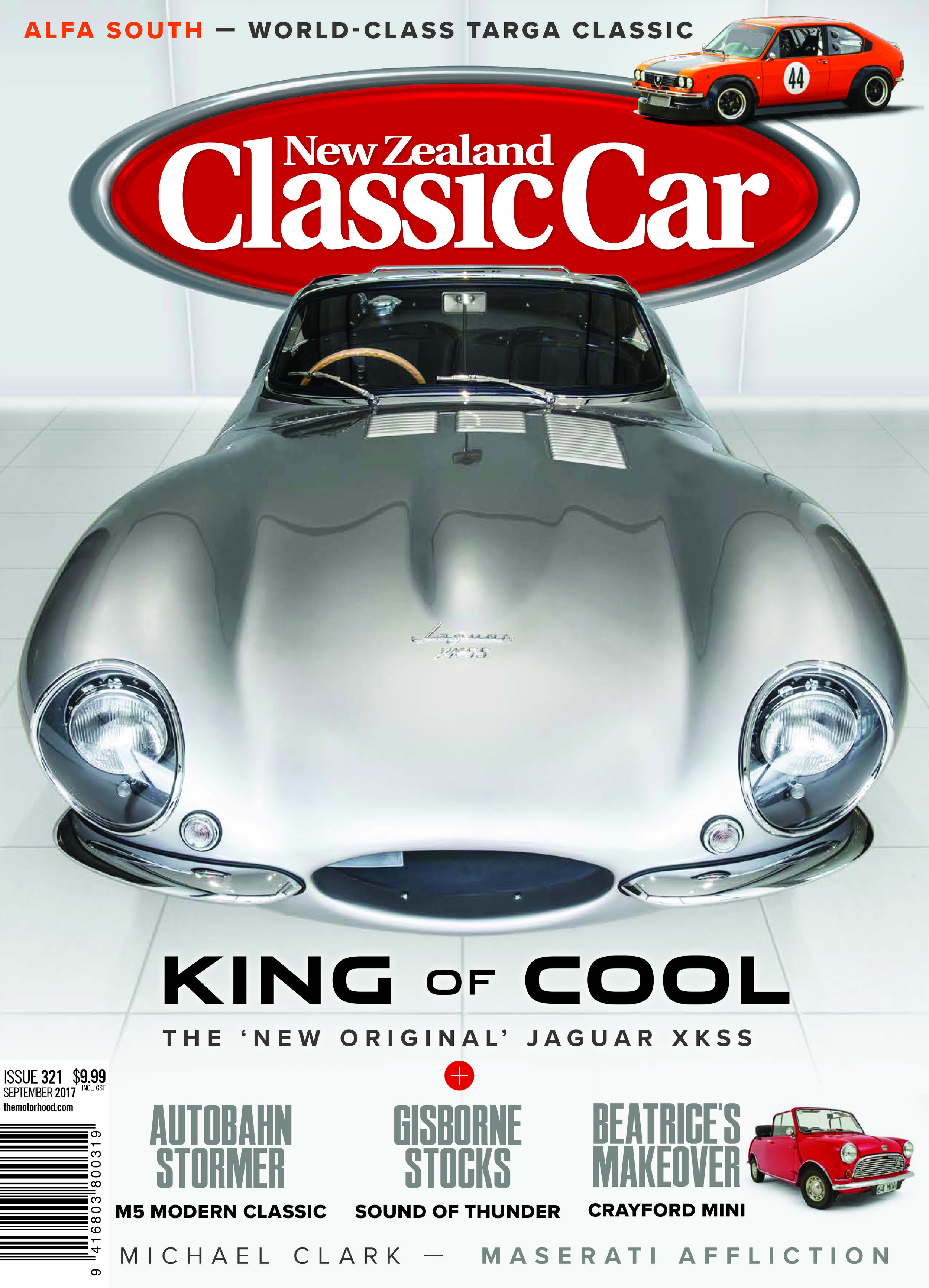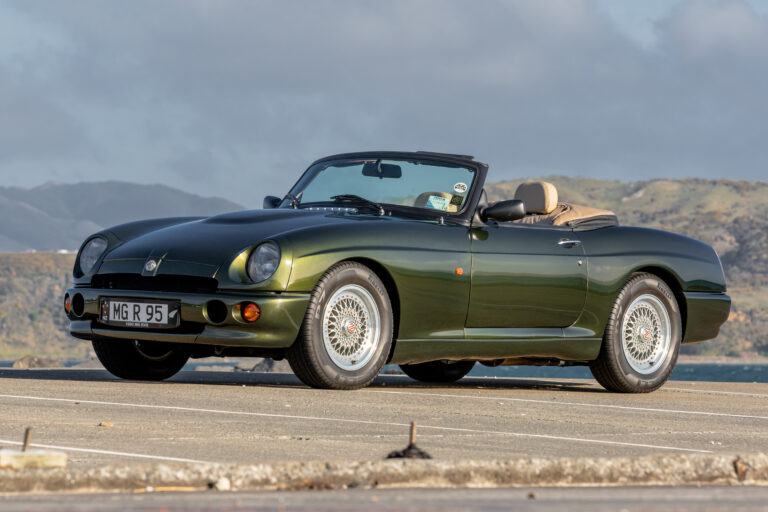There are few more noble reasons to buy a car than the ‘McQueen factor’. It’s that which makes this car so cool and is the reason that Michael Giltrap couldn’t turn down the opportunity to buy an icon

The name ‘Giltrap’ will be familiar to a great number of Kiwis. Joint managing director of the Giltrap Group Michael Giltrap has spent his life surrounded by cars. The newest, the best, the quickest. He’s heard every reason to buy (and probably not to buy) a car: it’s practical, it’s fast, it’s fun. And, of course, there are more than a few reasons you’d buy the XKSS — the history, the racing pedigree, the provenance. But there are few more noble reasons to buy a car than the fact that Steve McQueen owned one and how cool that makes this car. And that’s the reason Michael couldn’t turn down the opportunity to buy the icon. We had a chat to him, and got his take on what it’s like to own a legend.
New Zealand Classic Car: How did you come to own a 2017 XKSS?
Michael Giltrap: We were very lucky to be offered the opportunity to own the car by John Edwards [managing director of Special Vehicle Operations at Jaguar], who was very keen to see one of the cars end up on this side of the world. Being the continuation of the Le Mans–winning D-Type and the first supercar, but perhaps, above all, the fact that McQueen owned one, it was just too compelling to turn down.
How involved were you during the build of the XKSS?
I went up to the Jaguar Land Rover Classic factory a couple of times while the car was being built. The most difficult decision to be made was the colour. Although British Racing Green was in the mix, I landed on the silver, as I felt the lines of the car were best displayed with that colour, and it really showcased the rivet and panel work that has gone into building this car.
What are your plans for the XKSS now that it’s here in New Zealand?
Look, we’ll probably enjoy it on odd occasions, but the idea is to show the car off as much as we can by sending it around the country to Jaguar dealers, so that all Kiwis have the opportunity to see the car.
What are your thoughts on the remanufacture of classics by the manufacturers? Do you think it detracts from the originals?
I’m obviously a benefactor of this movement, so I think [that] while there’s still great value in the originals, these new-old cars might make the originals even more attractive by bringing the spotlight to them.
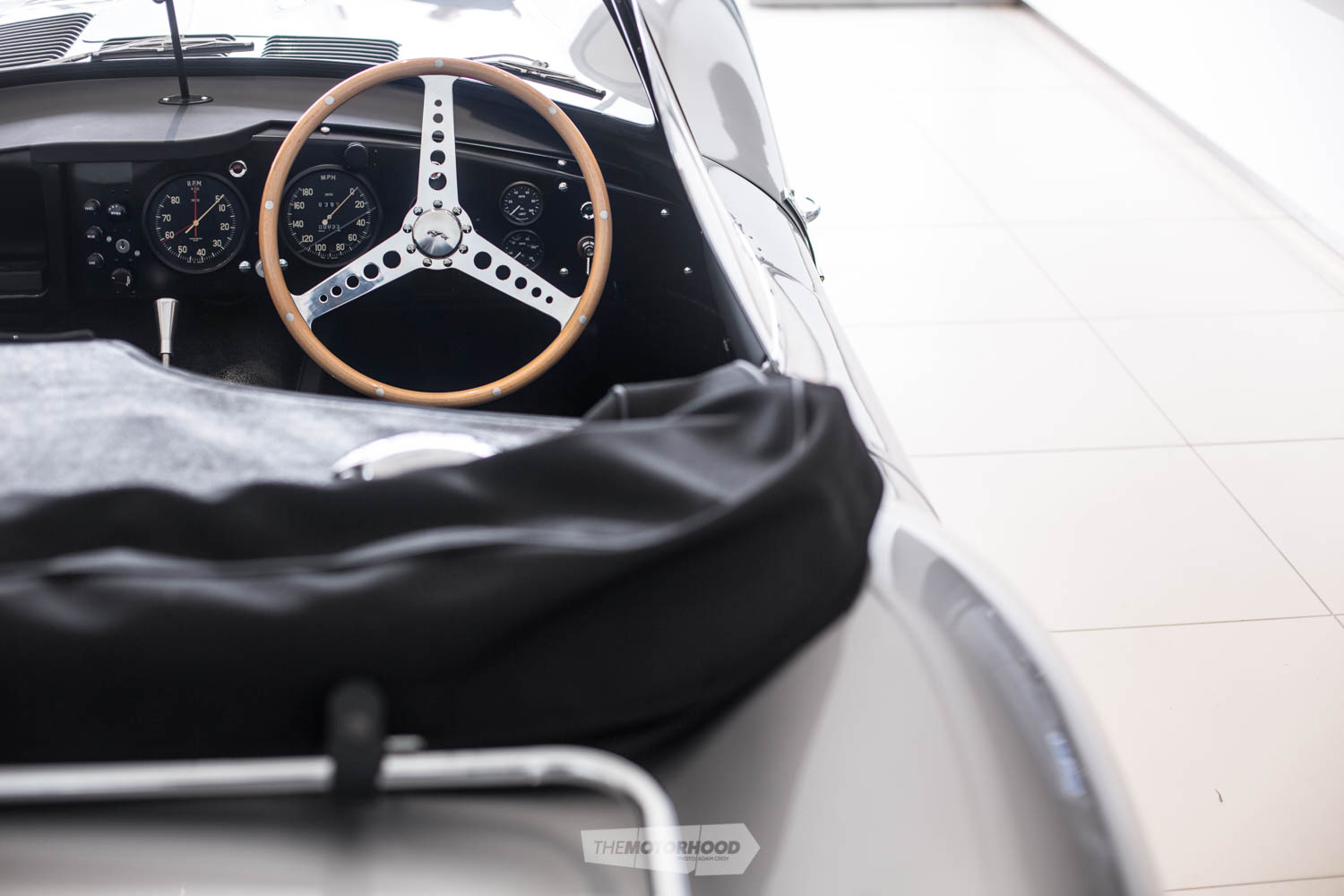
Remaster
When Queen released Somebody to Love on the album Day at the Races in 1976, it was a revelation. The voices of Freddie Mercury, Brian May, and Roger Taylor had been recorded and layered to give the effect of a 100-strong gospel choir. The depth of this layering has made the song Somebody to Love arguably one of the best, not just of Queen’s back catalogue but of all time. So, when it was remastered in 2011, though naysayers and self-proclaimed purists had said the practice detracts from the originality of the song, the digital enhancement has made the vocal layering even richer. The remastered version of Somebody to Love is more complex and with better sound, without alteration of the original structure of the song.
And so, just as in the music world, there is occasionally a car that deserves a remaster. Several marques have begun to look at their heritage and missed opportunities, to remanufacture some astonishing cars; the members of Queen aren’t the only British rock stars to have gone down this track with a fair amount of success. Aston Martin built 25 race-spec DB4 GTs to round total production to 100, and, in 2014, the Jaguar Land Rover Classic division began operations when it built 18 lightweight E-Types with unused 1963 chassis numbers. But there possibly isn’t a vehicle that has been more deserving of a remaster than the incomparable Jaguar XKSS.
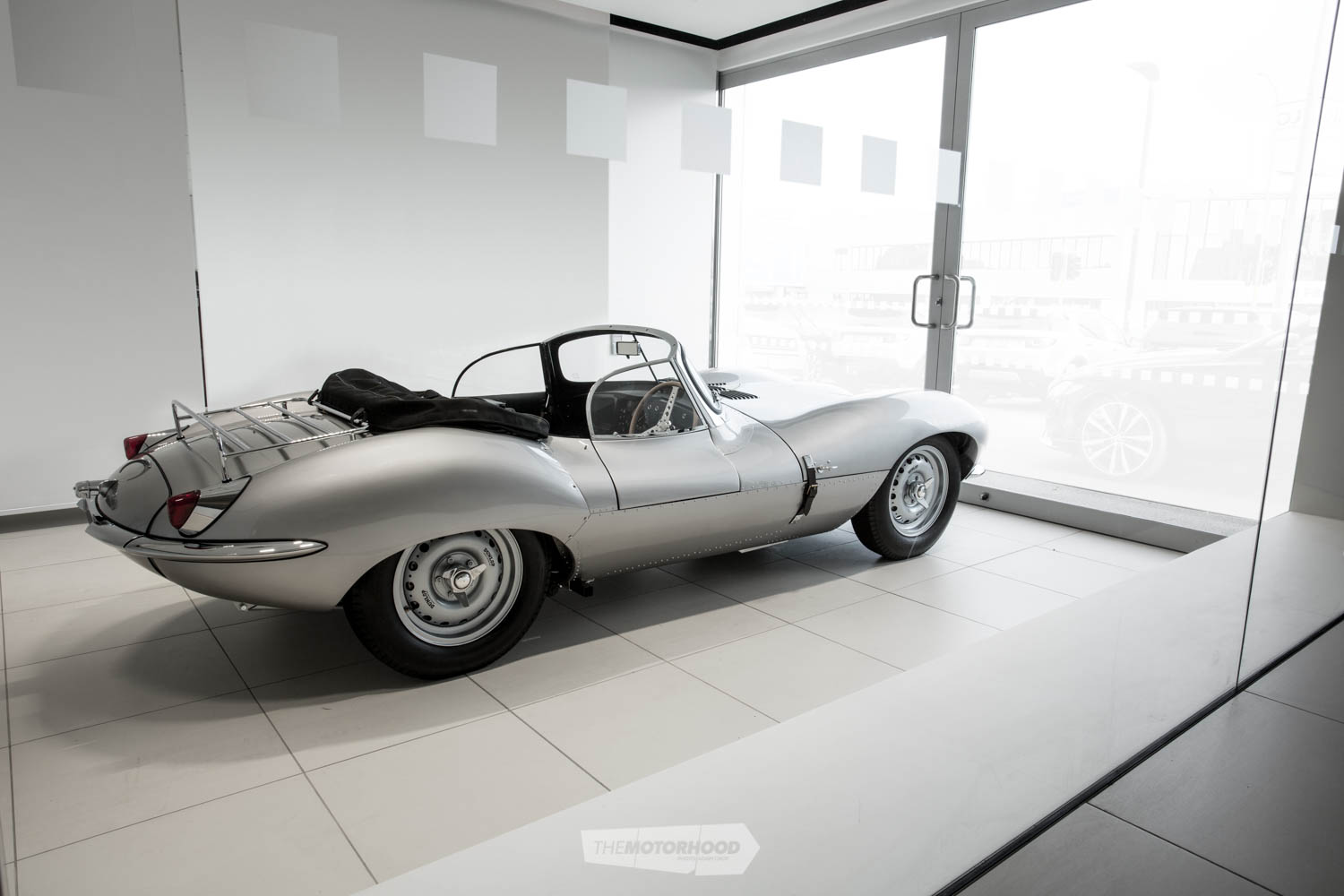
Race to road
The Jaguar XKSS was originally built as the road-going version of the 1955/’56/’57 Le Mans–winning race car, the D-Type. The D-Type reshaped the way race cars were built in the 1950s, with revolutionary monocoque construction. The tubular front subframe was attached to the monocoque tub that carried the engine, steering, and front suspension. When Jaguar temporarily retired from racing at Le Mans in 1956, Sir William Lyons, chairman of Jaguar, spotted an opportunity for the unused 25 D-Types from the race programme. He had recognized demand from the American car market for small fast road cars with racing pedigree. The D-Type was the perfect platform, and the XKSS concept began to take shape.
The XKSS has long been touted as the world’s first supercar (to the ongoing chagrin of Mercedes-Benz, in particular, which feels the 300SL should claim that title). Jaguar was able to translate the successful formula the D-Type employed to dominate Le Mans into a stunning road car capable of speeds that would leave some modern performance cars scrambling. The XKSS hit 100kph in 5.8 seconds (just a 10th of a second slower than the front-wheel-drive Nürburgring lap record holder, the 2017 Honda Civic Type R), and carried on to a top speed of 235kph.
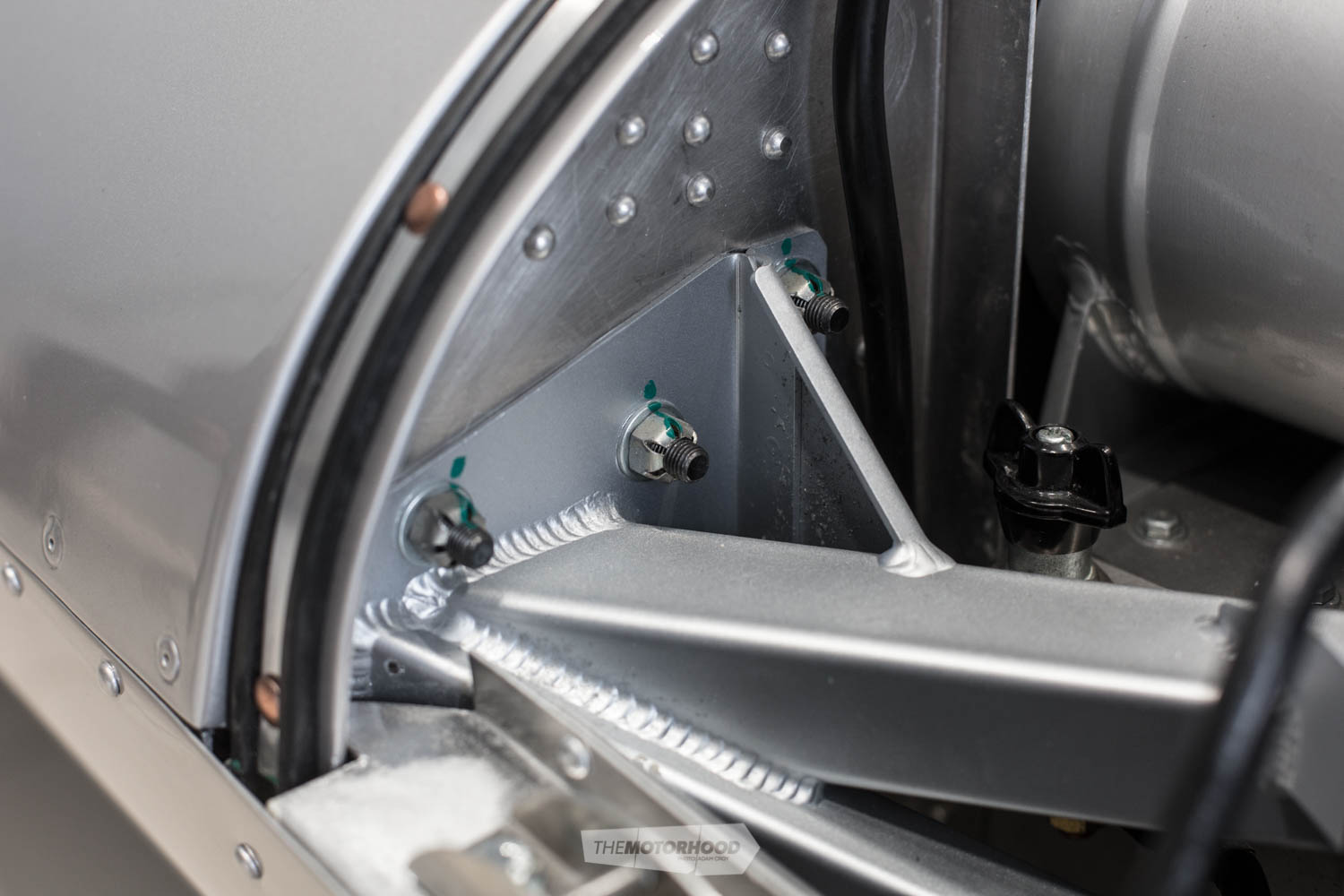
Fire!
Jaguar’s Browns Lane facility was originally built by the Daimler Company as a shadow factory in the lead-up to World War II. Shadow factories used to transfer technology from the motor industry to boost manufacturing capacity for much-needed aircraft for the British Forces. With the war in the history books, Jaguar took a lease on the Browns Lane factory in 1951, which would become home to some of the most magnificent manufacturing to come out of the UK.
On February 12, 1957, the Browns Lane factory went up in flames and was all but destroyed by fire, along with 200 vehicles, including nine of the 25 XKSSs at various stages of the build process. But the concern then was more around Jaguar’s capability to continue to produce any type of vehicle, so the loss of a few project cars wasn’t a priority — perhaps not until values of the original 16 vehicles reached stratospheric levels.

“The XKSS is one of the most important cars in Jaguar’s history, and we are committed to making the ‘new original’ version absolutely faithful to the period car in every way. From the number, type and position of all the rivets used — there are more than 2000 in total — to the Smiths gauges on the dashboard, everything is the same as the original cars, because that is the way it should be.”
— Kev Riches, Jaguar Classic engineering manager
Take two
In early 2016, following the success that Jaguar Land Rover’s Classic division had had with the lightweight E-Type reproduction, it was announced that those nine cars lost in the Browns Lane fire were to be rebuilt — from scratch and by hand, just as they were in 1957. The E-Types had used chassis numbers from the original run of vehicles, but the XKSS would not wear the chassis numbers from the cars sent to that winding B-road in the sky in the 1957 fire. Tim Hannig of Jaguar Land Rover Classic explains: “The cars were scrapped, along with their chassis numbers, after the fire … It’s very different to the E-Types where the numbers were allocated, but never used. Here the cars were actually built, then destroyed. They will get new chassis numbers from the unused allocation.”
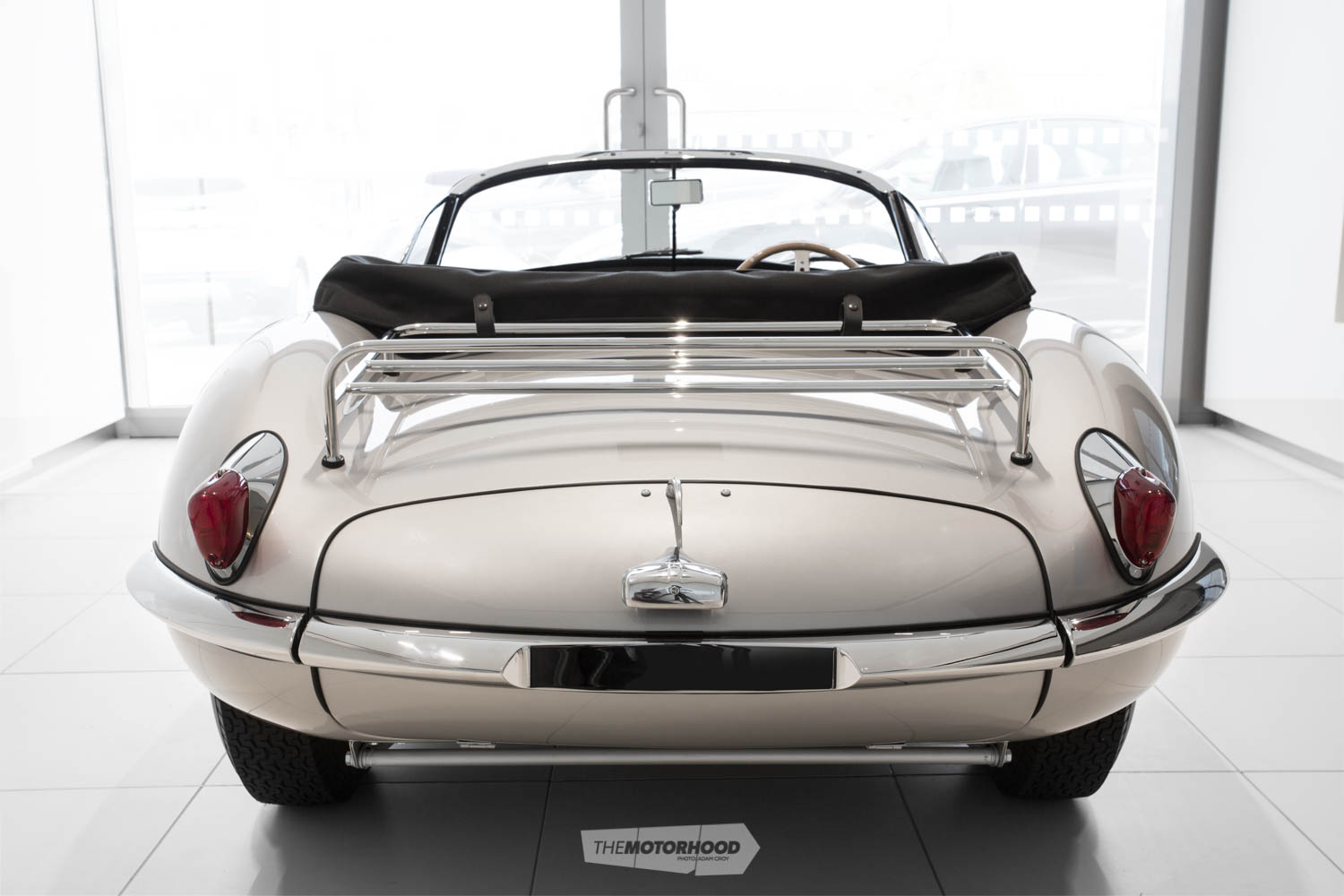
Building the legend
So, where do you begin when rebuilding a car to the same original specifications as 60 years ago? You go back to the original blueprints, right? Grand idea; the only issue being that they, along with the original cars, also went up in the fire. So, the Jaguar Land Rover Classic team began from absolute zero.
“We started by studying our extensive archives and the original plans for the car, before locating and scanning four original XKSS models,” What the resulting 3D models showed was that due to the nature of hand-built vehicles, no two cars were exactly the same. These slight differences and imperfections were a trait Jaguar Land Rover Classic was happy to continue with and is the reason the build used hands rather than machines. “[The original XKSS] had irregularities and panel gaps no modern automaker would allow out of the factory,” Hannig says. “Our team used computer imagery to determine what gaps should appear where, to maximize authenticity.”
The body of the 1950s XKSS was a magnesium alloy no longer manufactured. Instead, a special material produced in a single sheet was used. From the scans of the four original cars, new bucks were made for the bodies of the reproduction vehicles, to be hand shaped just like the original.
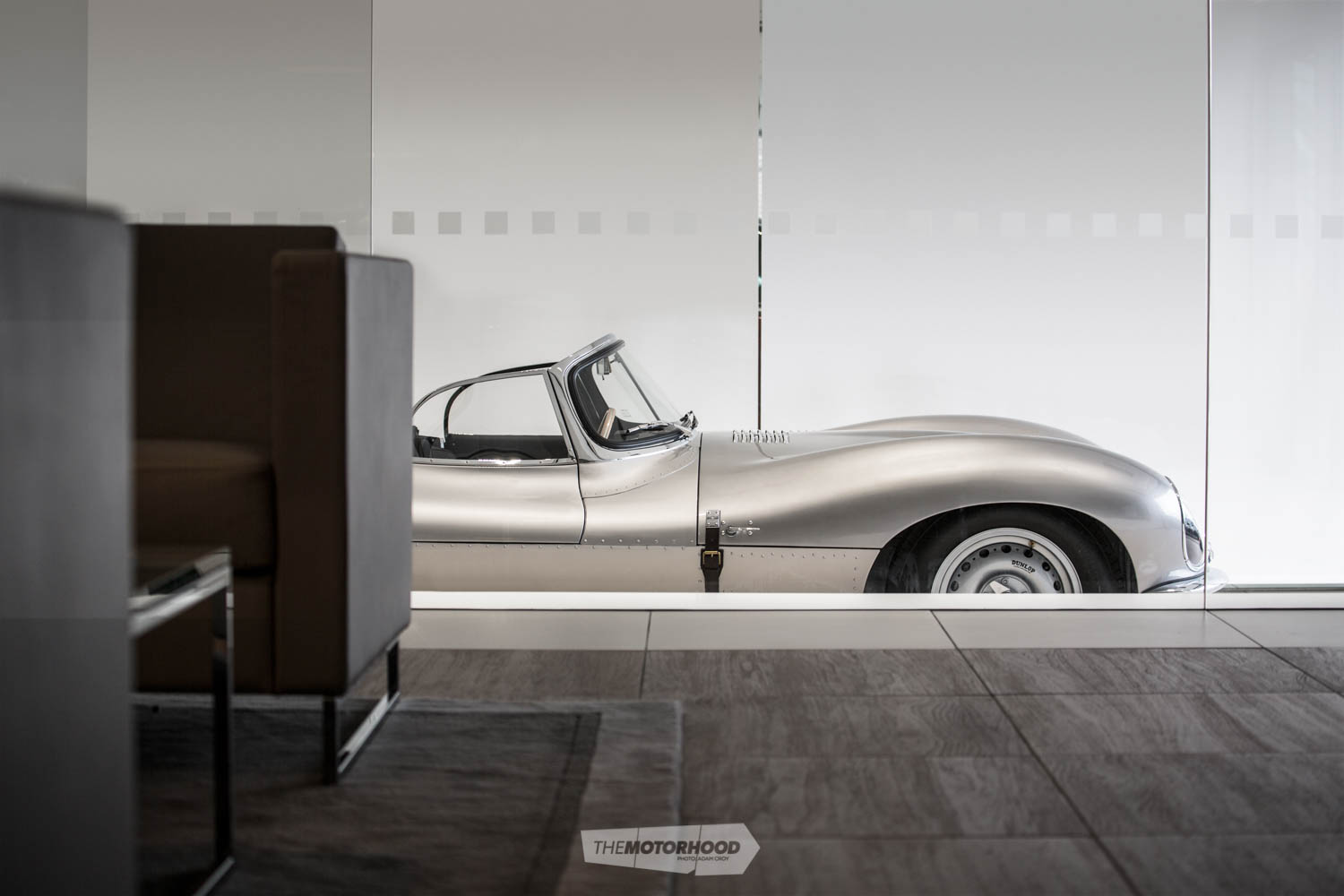
Power
When Jaguar Land Rover Classic began the process of looking to power the new-old XKSS, there wasn’t exactly an inventory of engines lying about. Instead, it hunted for an original D-Type block, managing to find one at a Jaguar dealership in the UK. Using that block as a base, new cast iron blocks were made, along with newly cast cylinder heads and three Weber DC03 carburettors, to match the original. The 1957 XKSS was also a pioneer for the use of a dry sump.
A recreation was a challenge due to the number of rivets and screws required, but what it did mean was the ability to drop the engine slightly, so centre of gravity would be lower. The resulting 195kW (262hp) 3.4-litre straight-six engine, paired with a four-speed racing Moss gearbox with race clutch, has the same throaty rasp of the original, as well as that legendary performance.
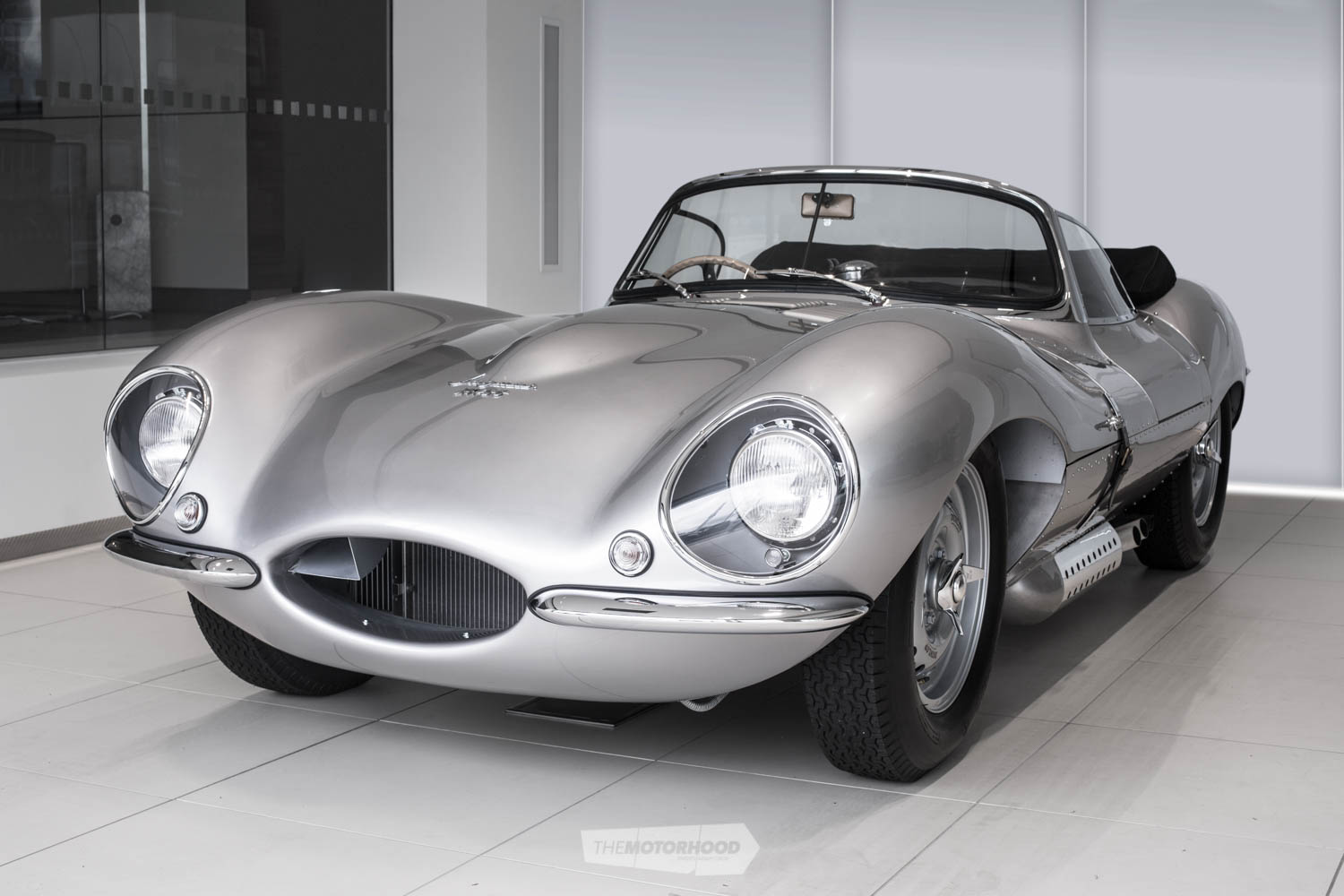
The future
So, what’s the verdict on this new era of new-old cars built by the manufacturer? Well, of course, there will be the purists, who will insist that Freddie can only really be appreciated through an old record player attached to some booming floor speakers. But there are also those of us who think that the remastered version might just be better than the original, and perhaps it is the same with these modern versions of old classics. All we know is that there is now another iconic car that you and I will be able to see on Kiwi roads every now and then, and that’s pretty cool.
Body copy quotes by Tim Hannig attributed to interview by Michael Harvey of The Telegraph.
This article originally featured in NZ Classic Car issue No. 321 — Click the cover below to purchase a print copy of the magazine



